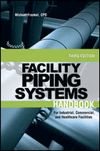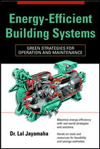Good Guidelines Are A Good Base
Standardization of company engineering guidelines can contribute to a good design becoming a great design because standards are engineering tools that are continuously improved upon when used. Continuous improvements are an integral part of the quality process and they are something that I strongly believe in. At the same time, office standards are a double-edged sword if individuals are not educated in the company’s true intent of the details and/or specifications. The same can be said for the firm’s engineering manual, if such a document exists within the company. Such tools can be as easily misapplied as properly applied, so education and control of the documents is essential to avoid the wrong edge of the sword.Engineers beware! Misapplied details and excessive, long specifications will add cost to a construction budget. Hiding behind lots of drawings and specifications doesn’t make for a great and/or cost-effective job. Certain cautions must be taken when applying these engineering tools.
First, because they are easy to obtain, details, specifications, and guidelines can be a problem waiting to happen. No one should be allowed to use them without being knowledgeable of the standard. I would suggest engineers and designers be tested on each detail and section of specification before they can apply them. Today it is not uncommon to see five to six contract drawings full of details. There are two questions that I ask myself when reviewing the construction documents: Are all these details relevant, and if so, what was the cost-benefit that warranted the use of this many drawings? Secondly, if relevant to the job, did the design team take advantage of the benefits associated with these details?
Details are meant to make clear a specific part of the engineering layout. A detail can eliminate the task of repeating the same information again and again. In doing so, the detail should displace the need to duplicate the information somewhere else on the drawings. Quite often, I find the information is shown on the construction drawings and then shown again but at a larger scale on a detail sheet. That’s redundant and it also creates the potential for a conflict between the two documents.
Tailoring The Specification
So often, I have seen specification writers load up on criteria because it is their master specification that is being used. They are proud of the wealth and depth of information that has been placed in this office standard.Unfortunately, the specification writer is off drafting the project specification while the design engineer is busy developing the construction documents.
Somewhere along the line, the design engineer must take ownership for the specification. It is not something that can be left to the writer. Think about it. It is the specification writer’s job to write a comprehensive document, but it is the engineer’s responsibility to clearly state the needs and then thoroughly review the specification for completeness as it pertains to this particular job.
I am amazed at how many engineers, responsible for an hvac project, do not know all the details that go into a specification. If they did, they would be very interested in seeking out value-added alternatives based on the experience of others in the firm. There is so much “boiler plate” in today’s contract documents. New ideas need to find their way into the company standard specification and, bigger is not better when it comes to writing a specification.
A third potential problem area for an engineering firm is creating its own engineering manual. We are currently doing this to fast-track the design process, and to add a quality control process to how each and every engineer sizes ductwork, piping, air handling, etc.
It has been said the process can be classified as a “boutique” engineering approach. Clearly, it is a culture change for the more experienced engineers joining the company. As a result, it is imperative to introduce quality control measures that mirror the fast-track and/or detailed processes with which we are involved.
The engineering manual can be filled with a collection of survey checklists, startup sheets, verification test procedures, pipe sizing charts, etc. Being brief and to the point can prove to be a problem, when these tools are given to an uneducated user.
Next month: the positive side of the “company standards” sword.


